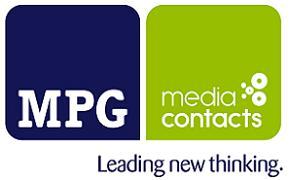MPG: New Survey Suggests "Collaborative Care" Platforms Are the Future of Pharma Marketing - Joe Abruzzo & Mahesh Krishna - MediaBizBloggers

In the 15 years since the first Direct-To-Consumer pharmaceutical ads hit the marketing world, consumers have radically changed the way they handle their own healthcare: search engines have become the first stop for triage, YouTube is the new surgical theatre, and Google Health has placed medical record ownership in the patients' own hands. In the early years of DTC marketing, prescriptions for heavily-advertised brands grew at a rate six times that of non-advertised brands[1]—no small change in a $122 billion dollar industry where even a minor uptick in market share can result in multi-million dollar boosts for any given pharmaceutical company.[2] A more recent Millward-Brown study on the efficacy of DTC advertising demonstrated a 0.96 correlation (i.e. near perfect) between advertising expenditure and new prescription volume, and ascribed most of the value of pharma advertising to "brand awareness" and "emotional affinity."[3]
Today, with digital marketing on the rise and increasing uncertainty about traditional DTC advertising's ability to deliver the same momentum for brands that it did 10 years ago, one fundamental point of influence has continued to stay relevant—even if somewhat altered: the doctor-patient conversation.
MPG's 2010 Pharma Connect Study – a study of all touch points that influence patients at every stage of the patient journey, from awareness to asking the doctor for a specific brand, to advocating it to others - shows that the doctor-patient conversation is still the most influential source of information relating to drug brands. While mass media, such as television and print, continue to play an important role in creating awareness for drug brands, more than 72% of the 525 American patients we interviewed said their discussion with their physician is the ultimate determinant for which drugs they receive a prescription for. The second most influential touch point for consumers? A discussion with their pharmacist or an informational website about a specific disease, tied at 45%. Written information provided by the patient's pharmacy and magazines about specific diseases follow closely behind at 43% each.
Conventional wisdom dictates that patients and physicians have very different information needs and, hence, need dedicated communication streams—and, at first glance, our research supports that. Meanwhile the 150 American physicians interviewed ranked medical conferences as the most influential source that would lead them to prescribe a specific brand of drug to their patients (85%), followed by discussions with academicians and clinicians (83%), articles and papers in medical journals (81%) and discussions with colleagues (77%).
Thus, pharma marketers create two very different streams of communications. It is not uncommon to see brands even creating two different websites for the different targets.
However, a deeper look at the survey results reveals an overlap in highly persuasive touch points for both targets. Very often, both doctors and patients are using the same channels to retrievesimilar information, and the dynamic is more collaborative than previously thought.This is not just a matter of mass marketing platforms that happen to reach both of the key parties in this conversation; it's a series of common channels ranked as high-impact by both patients and physicians.
However, websites and communities built for specific diseases—both branded and not—are a primary source of peer feedback. Search is the primary navigation tool for both physicians and patients looking for information online.
Some pharma brands are already actively exploring and experimenting in the online arena, though they have stopped short of a creating a shared space for both patient and doctor communications. HPV vaccine, Gardasil, collected 100,000 fans on Facebook. Diabetes products line, OneTouch, has fostered an online community for hundreds of thousands people with diabetes. Alli offers guidance for an entire lifestyle. And yet, not a single one of these adventures into social media have included the physician.
But it is not all about digital platforms. Even patient brochures are meaningful to both physicians and patients alike. Samples give patients and physicians opportunities to test new treatments and learn more about their impacts. Each of these touch points represent a huge opportunity for pharma marketers to continue (or even start) the conversation between the doctor and patient outside of the office.
And yet, the patient of the near future will be even savvier. Patients will become more conscious of the real cost of their healthcare and will demand to learn more about drugs even before taking them. Pharma marketers have an opportunity to bring the power of doctor-patient dialogue to emerging platforms in a "collaborative care model" to achieve two goals: First, satiate patients' appetite for information; and second, bring the credibility of doctors to help patients delineate good information from misinformation.
By bringing the doctor and patient into the mix and providing a platform where they can seriously discuss both disease and solution, a pharmaceutical company could be taking leaps into health care's future.
The technologies are there. What we need is imagination and investment to create collaborative care platforms that will evolve doctor-patient dialogue to a whole new level.
[1] National Institute for Health Care Management Research and Education Foundation, (November 2001). Prescription Drugs and Mass Media Advertising, 2000. www.nihcm.org
[2]National Conference of State Legislatures, (updated January 2010). Marketing and Direct-to-Consumer Advertising (DTCA) of Pharmaceuticals.www.ncsl.org
[3] Millard-Brown (2008). Direct-to-Consumer Advertising Works.


